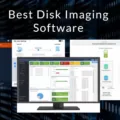SOAR (Security Orchestration, Automation, and Response) is a set of software solutions and tools designed to help organizations improve their security operations. It enables security teams to rapidly detect, investigate, and respond to cyber threats in an organized and automated manner. With SOAR, security teams can automate mundane tasks such as security operations workflows and incident response processes. This allows for faster response times and improved collaboration across the organization. Additionally, SOAR tools enable organizations to integrate data from multiple sources, including network devices, endpoint protection solutions, cloud applications, SIEMs, and ticketing systems. This allows organizations to quickly identify potential threats and take the necessary steps to mitigate them before they have a chance to cause damage.
The importance of security in today’s digital age cannot be overstated. As technology continues to evolve, so do the methods and techniques used by cybercriminals to gain access to valuable company data. To stay ahead of the curve, it is essential that organizations have a robust security infrastructure in place. This includes having the right tools and processes in place to quickly detect, respond to, and contain potential threats.
One such tool is Security Orchestration, Automation, and Response (SOAR). SOAR is a comprehensive suite of software solutions and tools designed to streamline security operations in three key areas: threat and vulnerability management, incident response, and security operations automation. By leveraging the power of automation and artificial intelligence, SOAR provides businesses with an integrated platform for identifying potential threats before they become a problem.
SOAR allows organizations to ingest security events from various sources including traditional infrastructure components as well as cloud-based services. This enables businesses to track, analyze, triage events and automate responses from within one interface. By automating manual processes such as threat investigation and incident response workflows, SOAR reduces the time it takes for organizations to identify potential threats or breaches and take action accordingly.
In addition to its automated capabilities, SOAR also integrates with existing SIEMs (Security Information & Event Management) systems so that all the data needed for thorough investigations is readily available when needed. Furthermore, SOAR’s integrated threat intelligence helps organizations prioritize potential threats by analyzing current trends across multiple industries. This allows companies not only to respond quickly but also accurately when dealing with potential incidents or breaches of ther system.
Overall, Security Orchestration Automation & Response (SOAR) provides organizations with an efficient way to manage their security operations while reducing manual effort associated with threat detection and response workflows. By combining automation capabilities with integrated threat intelligence, SOAR can help companies identify malicious actors before they cause harm while allowing them to focus on taking proactive measures against future threats rather than just reacting after an attack has occurred.

Is Soar a Security Information and Event Management Tool?
No, SOAR (Security Orchestration, Automation, and Response) is not a SIEM (Security Information and Event Management) tool. While both SIEMs and SOARs aggregate security data from multiple sources, they do so in different ways. Specifically, SIEMs ingest log and event data from traditional infrastructure components such as servers and databases, while SOARs are capable of ingesting far more information from an array of sources including cloud-based services, APIs, malware analysis tools, threat intelligence feeds, and endpoint protection solutions. Additionally, SOARs can automate the process of responding to security incidents by triggering pre-defined workflows based on specific conditions or alerts. In contrast to SIEMs which mainly focus on logging and alerting on security events, SOAR provides a more comprehensive view of the entire security incident management process.
Understanding SIEM and SOAR Technology
Security Information and Event Management (SIEM) is a type of cybersecurity tool used to collect and analyze large volumes of log data from multiple sources. It provides organizations with an overall view of their security posture, as well as the ability to detect threats in real time. SIEMs can be used for audit and compliance, anomaly detection, incident response, and more.
Security Orchestration, Automation, and Response (SOAR) is another type of cybersecurity tool that automates repetitive security-related tasks in order to save time and effort. SOARs are typically used for incident response automation, threat intelligence management, vulnerability management, workflow automation, and more. SOARs help organizations respond quickly to threats while reducing the time spent on manual processes.
The Use of Splunk Soar
Splunk SOAR is a comprehensive security orchestration, automation, and response (SOAR) platform. It allows you to automate complex security operations and response processes, streamline incident management, and significantly reduce the time it takes to respond to security threats. The platform provides a unified view of all security-related events across an organization’s infrastructure and helps organizations quickly detect suspicious activities, investigate incidents, and respond effectively. Splunk SOAR also provides integrated threat intelligence capabilities that allow organizations to identify threats early on and take preventive action to mitigate them. Moreover, the platform’s playbook automation feature enables teams to create automated workflows for responding to incidents faster without any manual intervention.
Comparing SWOT and Soar Analysis
SOAR Analysis is a strategic planning tool that helps organizations identify their Strengths, Opportunities, Aspirations, and Results. It is an acronym for Strengths, Opportunities, Aspirations, and Results. This type of analysis builds upon the traditional SWOT (Strengths, Weaknesses, Opportunities, and Threats) analysis by adding a fourth dimension – Aspirations – to create an even more comprehensive picture of the organization’s strengths and weaknesses.
The aim of SOAR Analysis is to help organizations identify their unique strengths and opportunities, as well as areas where they can improve. It also helps them identify aspirations they have for the future, while better understanding what they need to do in order to achieve those goals. The goal is to create insights from which strategies can be developed that will help lead the organization to success.
When conducting a SOAR Analysis, it’s important to remember that strengths should be identified in terms of how they can be used to capitalize on opportunities or address issues related to results. Likewise, weaknesses should be identified as areas where opportunities can be missed or results may suffer if left unchecked. The aspirational element also encourages organizations to consider their vision for the future and set goals that are attainable yet ambitious.
Overall, SOAR Analysis is a powerful tool for businesses looking to improve their performance by understanding their strengths and weaknesses more deeply while setting achievable yet ambitious goals for the future.
How Soar Works
SOAR automates security operations by using AI and machine learning to detect and respond to threats in real time. The platform is designed to learn from past events and trends, allowing it to identify patterns and anomalies in data. This helps it detect malicious activity faster and more accurately than traditional methods. It can detect previously unknown threats by correlating similar events that may have been overlooked before. SOAR also automates responses to threats, allowing organizations to automate incident response processes without manual intervention. This reduces the time needed for security teams to respond, allowing them to focus on more important tasks. Additionally, SOAR continuously monitors for potential threats and provides detailed insights into the security posture of an organization, helping them be better prepared for future incidents.
Differences Between Soar and EDR
The main difference between SOAR (Security Orchestration, Automation, and Response) and EDR (Endpoint Detection and Response) is the scope of their respective operations. SOAR covers an entire organization’s security posture, including any connected devices, networks, or cloud infrastructure. It automates processes such as incident response, threat intelligence gathering, and remediation. In contrast, EDR focuses on individual devices or workstations. It provides visibility into security events on those endpoints in order to detect malicious activity or potential threats. EDR can also be used to investigate suspicious activities on a device and take immediate action against them.
SOAR tools can leverage data from EDR systems in order to identify suspicious activity that may otherwise go unnoticed. For example, they can ingest alerts from EDR systems and then correlate them with data from other security tools such as SIEMs or threat intelligence feeds in order to build a holistic picture of the security landscape and take appropriate action.
Conclusion
In conclusion, SOAR tools can be a powerful asset for any organization looking to streamline and secure its security operations. The ability to aggregate security data from various sources, automate incident response processes, and integrate threat intelligence helps organizations ensure the safety of their networks. SOAR tools also provide better visibility into security threats and allow for faster decision-making when responding to incidents. Overall, implementing SOAR tools can give organizations greater control over their security operations and help them protect their networks more efficiently.








